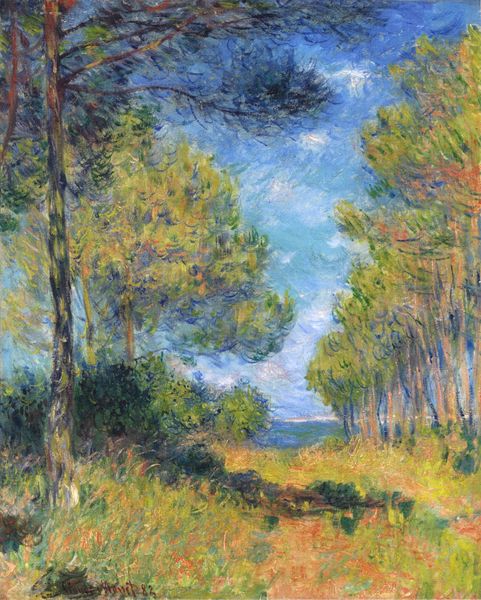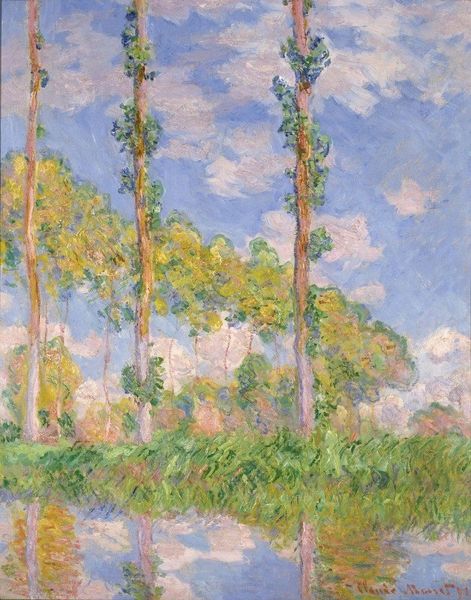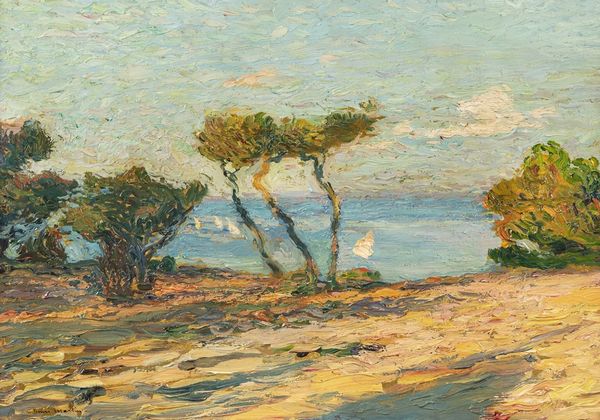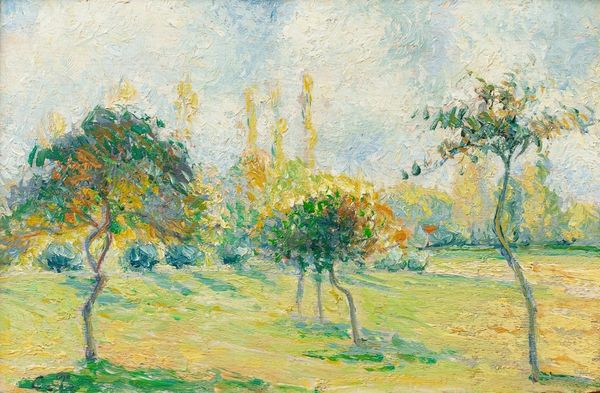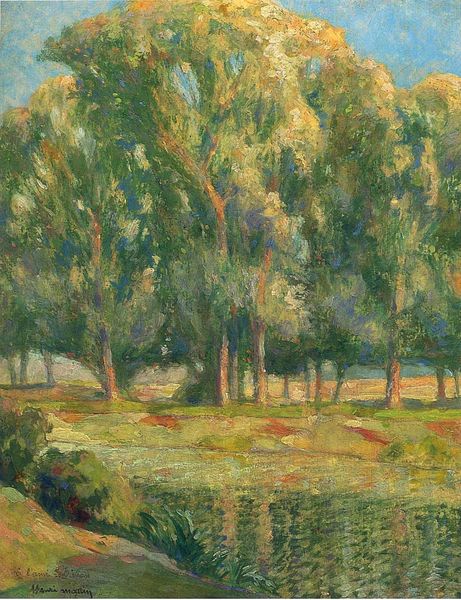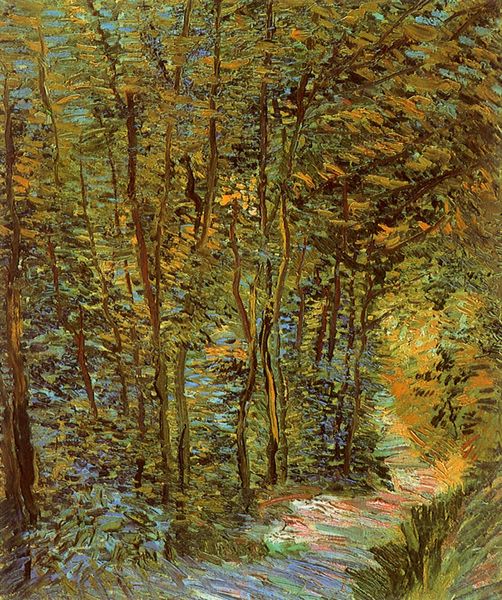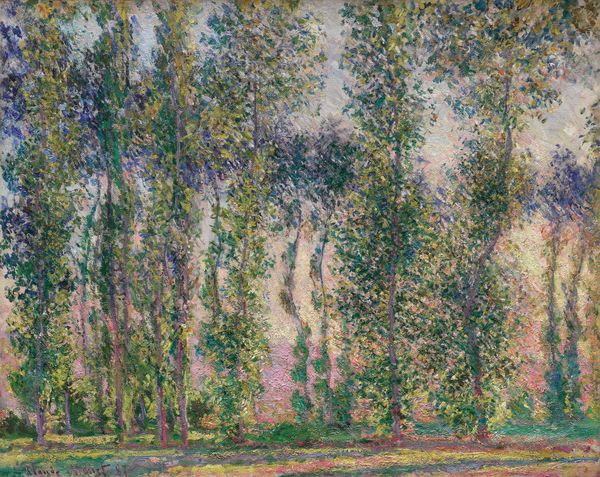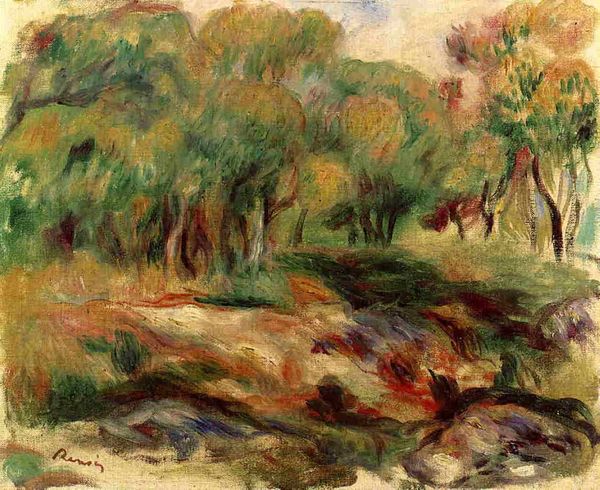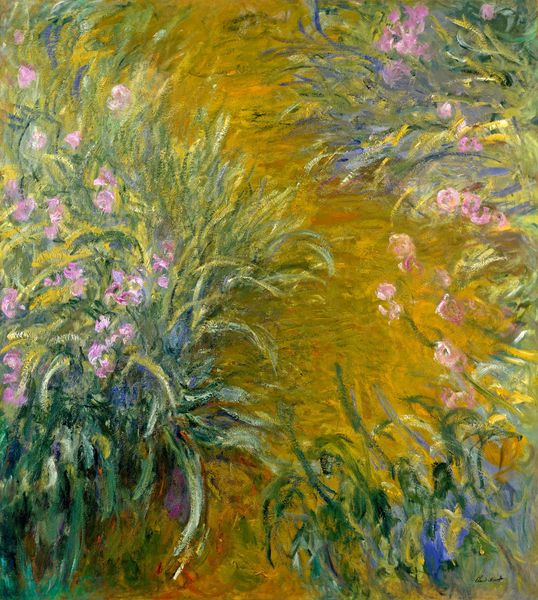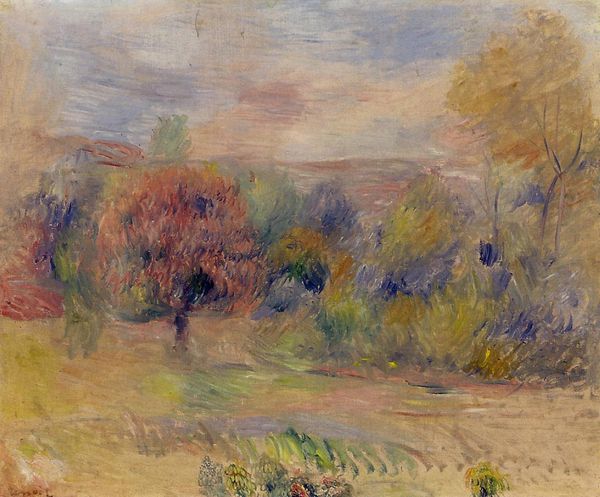
Trees in a Field on a Sunny Day 1887
0:00
0:00
vincentvangogh
P. and N. de Boer Foundation, Amsterdam, Netherlands
Copyright: Public domain
Editor: This is Van Gogh's "Trees in a Field on a Sunny Day" from 1887, painted with oil, seemingly en plein air. There's an intense energy here. What grabs my attention is how the light seems to vibrate off the canvas, almost overwhelming the forms of the trees. How do you interpret this work? Curator: The interesting aspect is how Van Gogh uses this scene, a seemingly simple landscape, as a canvas to explore anxieties prevalent in Parisian society at the time. Notice the heightened brushstrokes and somewhat distorted forms. Do they perhaps suggest a commentary on industrial encroachment and the longing for the pastoral? Editor: So, you see it as more than just a pretty picture? I was thinking of it as his attempt to capture the warmth of the day, maybe just a study in light. Curator: Indeed. While the impressionistic technique invites us to consider the effects of light and color, the choice of subject and the expressive brushwork contribute to a larger narrative. How does the absence of figures change the feel of the work, in your opinion? Editor: It definitely adds a sense of solitude, maybe even alienation. The lack of human presence makes the field feel vast, almost hostile, despite the sunshine. It does push it beyond just being a straightforward depiction. Curator: Precisely. Art institutions initially rejected this style. Understanding that historical context allows us to appreciate the radical nature of his artistic statement, challenging conventional notions of beauty and representation in the rapidly changing late 19th century. Editor: That's really interesting, I never thought about it like that. Seeing the landscape as reflecting those societal pressures…it gives the painting a whole new dimension. Thanks for sharing your insights! Curator: My pleasure! It is in revisiting artworks through evolving historical lenses that we discover more nuanced and diverse meanings.
Comments
No comments
Be the first to comment and join the conversation on the ultimate creative platform.
